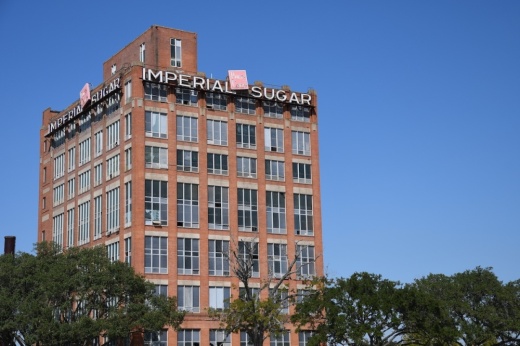Since the development was announced Dec. 1, details including overall project cost, initial land use plans and possible development restrictions have been released to the public.
Prior to the Jan. 24 town hall, residents were provided access to the development's land use map and development restrictions, including that a cap of 660 residential units would be implemented across the Imperial Sugar Char House development.
“While I understand that you need enough traffic to be able to pull off the char house, I would think that if you put together enough of an attractive venue, you’ll be able to pull in traffic from a long distance,” Sugar Land resident Mark McDonald said. “I don’t know if we necessarily need to put up apartments to support what’s going on at the char house.”
McDonald, who said he has lived in Sugar Land since 1987, was one of about half a dozen residents who spoke out against high-density housing in Sugar Land as part of the char house development.
Residents also pointed to the existence of the partially-completed Sueba USA development, which is located within the Imperial Historic District. The Sueba development allows for the creation of 274 residential units, but has not been fully built out as part of the contract behind its establishment requires office space to be built in proximity; according to city staff, Sugar Land will revisit this contract in the near future.
However, there was also a point of misunderstanding at the Jan. 24 meeting, Sugar Land officials said. According to city officials, there is a cap of 1,200 residential units for the entire Imperial Regional Activity Center. Some residents at the Jan. 24 meeting took the PUMA development standards to mean that the city was approving an additional 660 units on top of the 1,200 units allowed within the Imperial RAC. This is not the case, officials said.
In addition, Robin Cole, president of the Society of Justice & Equality for the People of Sugar Land, also known as S.O.J.E.S., asked PUMA CEO Mark Toon and the City Council to ensure that historical representation of African-American convicts be a part of the development. Cole went so far as to ask that one or two floors of the char house be dedicated to a museum for the cause.
A $1 billion investment
Toon provided more information regarding the development to residents at the town hall.
Some of the information, such as the fact the development will take inspiration from other nationally-recognized activity centers, such as the Pearl in San Antonio, and that the company is investing $40 million to $50 million dollars into restoring and expanding the char house, was already known.
However, Toon also said the total investment cost to fill out the char house development, for all parties, will likely be around $1 billion. Not all of that cost will be taken on by PUMA Development, but the figure shows the true scope of the project.
In addition, Toon released more information regarding plans for the char house building. Toon said the company aims to fill the first floor of the building with retail space and hopes to place a 2,000- to 3,000-square-foot bar on the top floor.
“We may run into issues with the historical commission, people may be a bit further away from the railing than they would like, but our goal is to have a place where people can come and appreciate the view from atop the char house,” Toon said.
The fifth floor will hopefully be a restaurant, Toon said, and the second, third and fourth floors have yet to be determined.
Barely breaking even
The char house redevelopment project will barely break even, if everything goes as planned, Toon said.
“In our best case scenario, a cap rate looks like breaking even,” Toon said. “And that’s not particularly exciting for investors.”
The capitalization rate, or “cap rate” for short, is a property’s yield over time, and is calculated by dividing a property's net operating income by its asset value.
“I’m looking at this like an entrepreneur, not a real estate investor, to be brutally honest,” Toon said.
Toon pointed out that his company has walked away from the development before.
“We were about a year in, and we walked,” he said. “We loved the project, but we just couldn’t find any way to turn a profit.”
However, Toon also said that he is dedicated to the project, “as long as my kids can still go to college,” he said.
One hurdle for the development firm is they must abide by a set of standards to ensure historical accuracy. To do so, the firm is working with Houston-based Urbana.
“I’ll give you an example of how picky they are,” Toon said. “We were told that the Imperial Sugar logo has to be on the east and west sides of the char house. ... We couldn’t have it on the south side, where it is now, facing the highway.”
Despite the difficulty surrounding the project, reception to PUMA’s efforts have been positive, Sugar Land officials said. Data from ZenCity, a social-media analysis platform, shows 70% of comments have been positive, 28% have been neutral and just 2% of analyzed users have expressed negative opinions on the project.
The timeline
The Sugar Land Planning and Zoning Commission will codify its recommendations for the development’s requirements on Feb. 14.
The City Council will then issue its first reading of the developmental agreement ordinance on Feb. 21 and will issue the second reading at the March 7 City Council meeting, where it will potentially approve the agreement, giving PUMA the green light to proceed.
“We’ve got a chance to take a pretty bold step,” Sugar Land Mayor Joe Zimmerman said at the Jan. 24 meeting. “We’ve been here a handful of times, and it hasn’t worked. But, if we, the council, planning and zoning and the public—and it’s the public, it’s not us—if we can’t agree, then it’s time to let Mark [Toon] know so he can go work on something else.”





